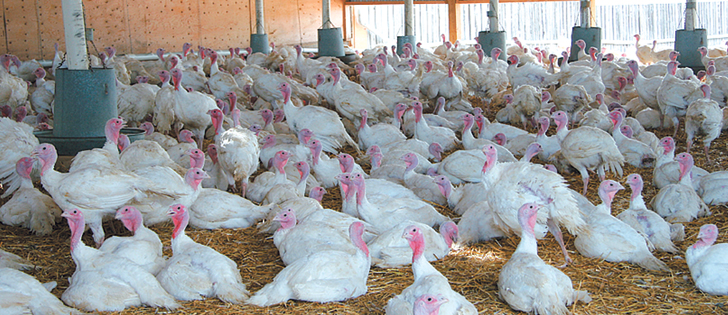The poultry sector stopped using antimicrobials important to human health in 2014, but antibiotics are still needed in case of a catastrophe
RED DEER — Antibiotic use in livestock is often cited as a reason to stay away from meat.
“There are no antibiotics in any protein in Canada,” said Mark Davies, president of Turkey Farmers of Canada.
“Once it goes through the plant and to the consumer, there isn’t any, but that is not what people believe.”
The poultry industry voluntarily stopped using Category I antimicrobials in 2014. They are defined as the most important to human medicine and include third and fourth generation cephalosporins such as Excenel and fluoroquinolones sold as Baytril.
Read Also

Farming Smarter receives financial boost from Alberta government for potato research
Farming Smarter near Lethbridge got a boost to its research equipment, thanks to the Alberta government’s increase in funding for research associations.
Turkey Farmers of Canada formed a working group last October to take on the antimicrobial issue. A committee of producers, breeders, hatcheries, academics, veterinarians, processors and feed mills has met three times to discuss antibiotic use in the turkey business.
Antibiotics are not widely used in turkeys, but farmers and veterinarians do not want to abandon these products altogether.
Davies, who farms in Nova Scotia, believes in tight management, biosecurity and good nutrition, but sometimes things go wrong.
“My job is to raise a healthy bird,” Davies said in an interview at the Alberta Turkey Producers annual meeting in Red Deer Feb. 28.
“We always need something because we might have a catastrophic illness, so if we can have that assurance, then we can have a tool in a toolbox.”
The industry wants to do the right thing by the birds and consumers, said Tom Inglis, an Alberta poultry veterinarian.
“If we can keep tools in the toolbox by empowering veterinarians, that is where our industry is going. We need to use them judiciously, but we need them when everything else has failed.”
The committee is grappling with a number of challenges as pressure mounts to do away with antibiotics. The pressure often comes when those who do not understand production agriculture are allowed to dictate how livestock are treated.
Farmers understand they have to respond to modern consumers’ questions about how their food is raised, and Davies approves of the veterinary-client relationship in which prescriptions are provided when necessary.
“We are really looking at a program that is a vet prescription so it is therapeutic and not preventive,” he said.
Another challenge is growing pressure to stop using Category II and III antimicrobials, said Phil Boyd, manager of the national organization. These are of high and medium importance to human medicine. Category II includes cephalosporins, macrolides and penicillins, while Category III examples are sulphonamides and tetracyclines.
“The buyers of the live bird are really sensitive to that kind of pressure coming back on them from their paying customers, like retail chains and food service,” said Boyd.
“If we don’t act unilaterally as a sector, then we run the risk of having some of these medications regulated out when we don’t have that much to choose from anyway.”
Education for consumers and more research into new therapies are needed.
The Canadian Poultry Research Council recently directed about $8 million toward gut health, vaccine development and antibiotic alternatives.


















